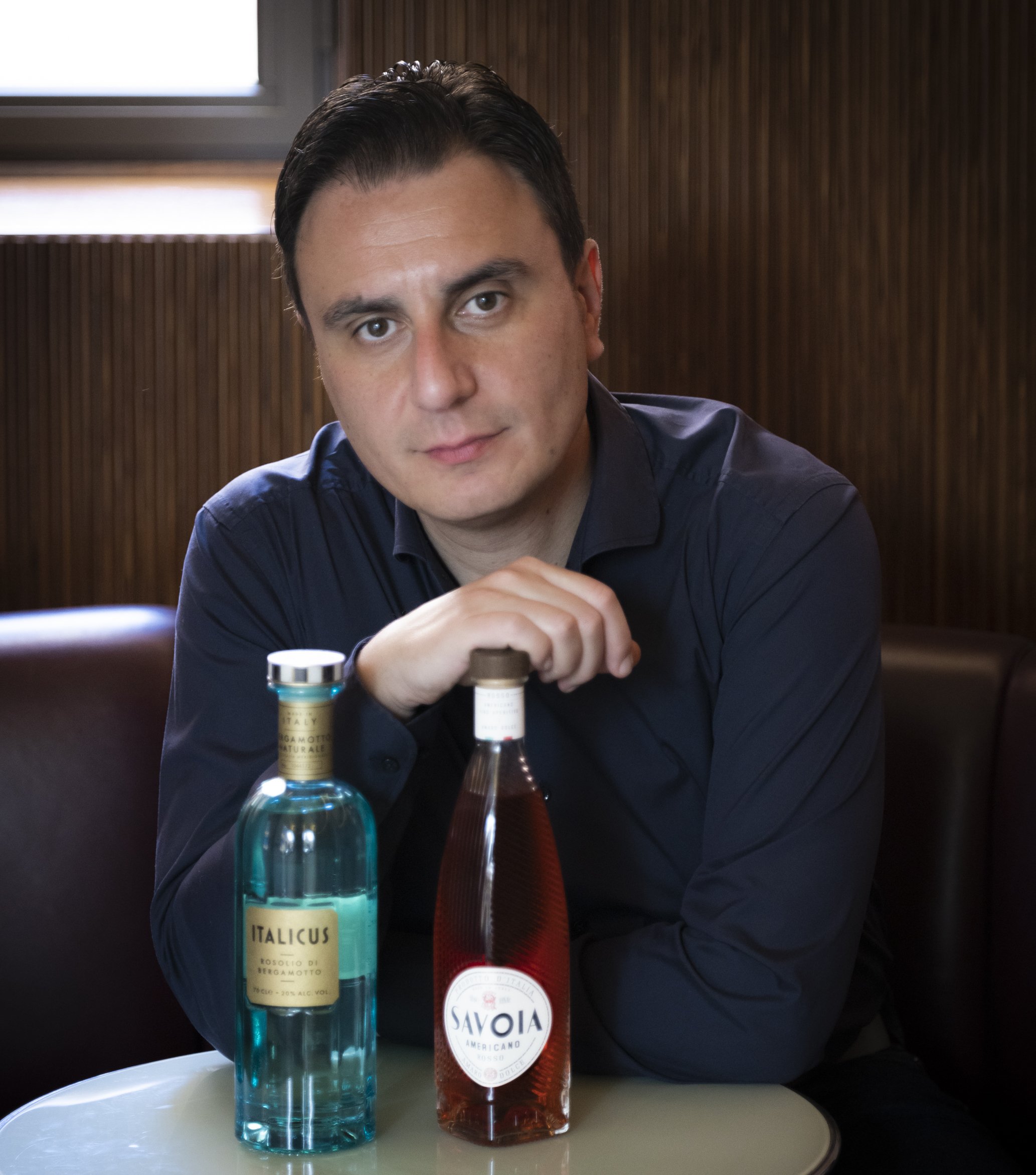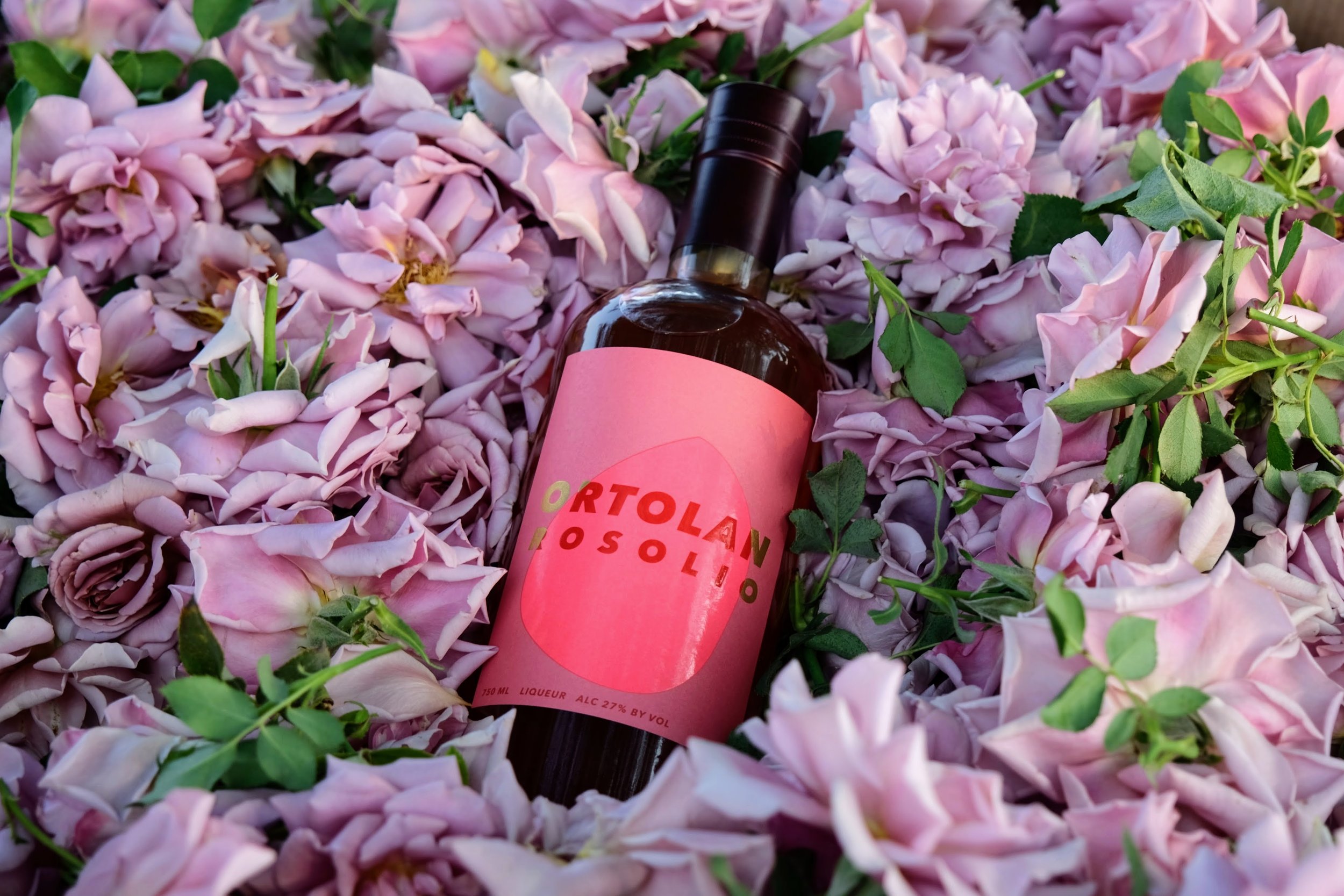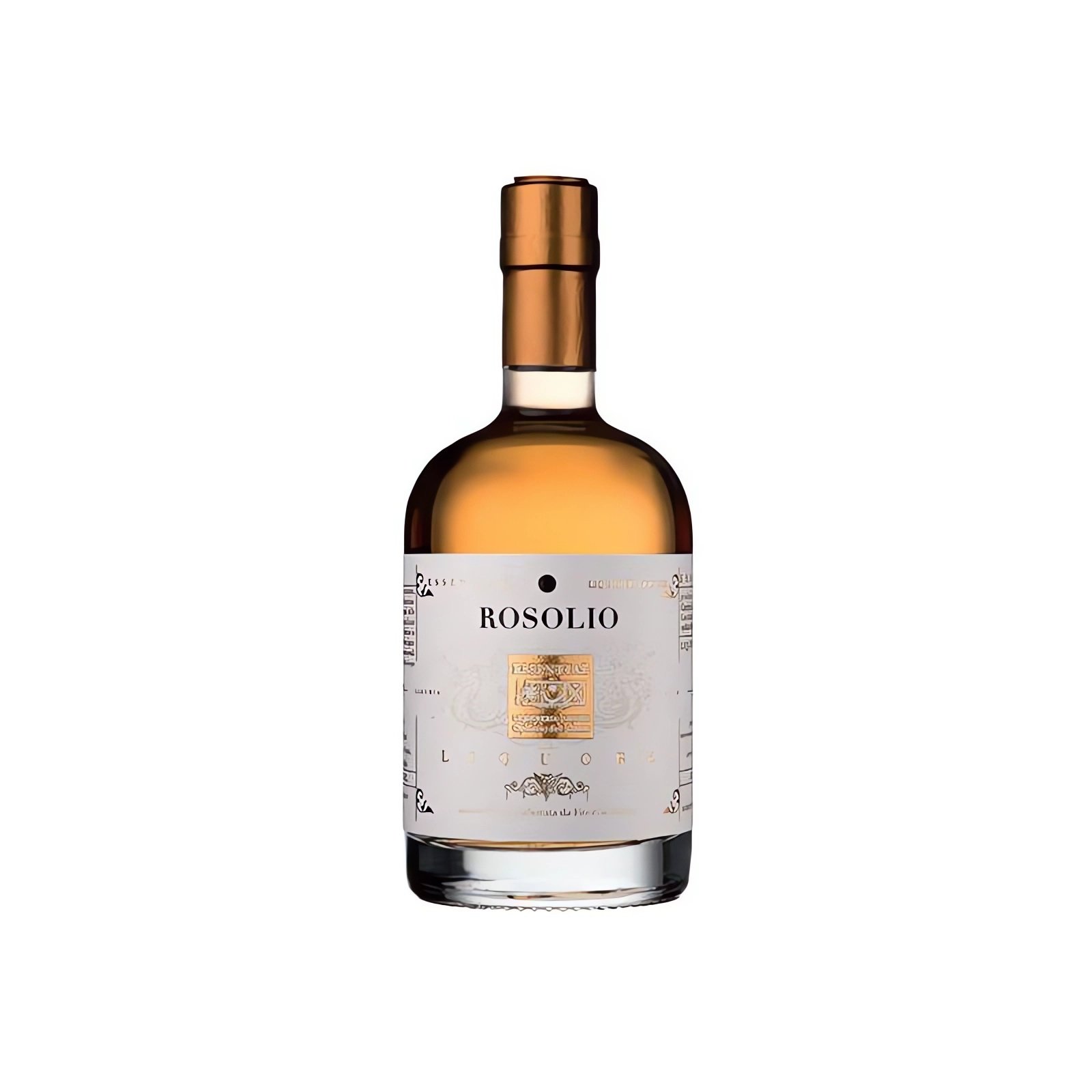What are Rosolio and Rosolio di Torino?
Giuseppe Gallo, founder and CEO of Italicus Rosolio di Bergamotto
Pre-dating both vermouth and bitters in the Italian botanical elixirs category, rosolio was more or less a “forgotten category,” according to Giuseppe Gallo, founder and CEO of Italicus Rosolio di Bergamotto, which launched in 2016.
With varying flavors of florals, citrus, and other botanicals, rosolio is another interesting paint color for fans of Italian bittersweet liqueurs. Gentler than various Italian amari, but both dryer and more floral than Aperol, here’s everything to know about rosolio before it inevitably becomes your go-to summer sipper, with or without the spritz treatment. It is 20% alcohol by volume (ABV).
What is Rosolio? (And What Isn’t Always Rosolio)
Italicus Rosolio di Bergamotto
Understanding rosolio begins with understanding that it is an entire category of various botanical liqueurs, often with regional variations, but not governed by one specific flavor profile. (Difford’s Guide lists a dozen regional Italian variations, utilizing everything from juniper, to blackberries, to fennel.) Typically a homemade concoction made to serve to guests, rosolio is a combination of a neutral, alcoholic distillate infused with various botanicals, especially flowers, citrus or herbs, diluted with water, and sweetened. Prior to beet sugar arriving in Europe from the Caribbean and South America, historically rosolio would have been sweetened with honey. While a bitter component isn’t necessarily a defining characteristic of rosolio, it can include it, and it is unusual for rosolio to be composed of a single botanical. (Over time those styles of rosolio would have evolved into specific, botanically-named liqueurs such as limoncello, maraschino liqueur, or elderflower liqueur, for example.)
While the name “rosolio” may evoke roses, and various rosolio recipes and regional variations sometimes do include or feature them, it is not the namesake botanical for the spirit, which is where much of the confusion about the category derives. Gallo explains that the name rosolio actually derives from a combination of the Latin words “ros” and “solis.” “Technically [the meaning] would be considered ‘morning dew,’” he says, referring to the practice of harvesting various herbs and florals first thing in the morning for their biggest flavor impact. “Pure herbs, spices, leaves, and fruits were harvested early, and infused with alcohol,” he says, in order to be used as an evening, pre-meal drink; a cordial frequently served to guests. A specific plant called “sundew” may have also been used as one of rosolio’s originating regional botanicals.
While Italicus isn’t the only player in the rosolio game, it is considered the first modern expression of rosolio, which more honors the regionality of the category and the complexity of the original concoction. In this case, Italicus Rosolio di Bergamotto is a rosolio featuring various types of citrus, in addition to other botanicals. (Rose is one of them, but so is lavender and chamomile, and citrus is Italicus’ leading flavor element.)
Rosolio di Torino
Other commercial spirits currently sporting the name rosolio — Ortolan Rosolio, Rosolio Francescano, and Essentiae Lunae’s Rosolio — are more accurately all rose petal liqueurs, or what would have been historically considered Rosolio di Torino.
Ortolan Rosolio
A 2020 NYI Spirits Competition award winner, Ortolan Rosolio made from around 30 varieties of heirloom organically grown roses grown in California. Like Italicus Rosolio, it is an aperitif and has 27% ABV. It can be enjoyed on ice or mixed with sparkling water. Founder and creator Rob Collier was inspired to create it after living in Italy and taking a liking to amari. Initially, he wanted to make an amaro but landed on rosolio after experimenting with roses from his mother's garden. "I did more research and in Sicily I came across rosolio—bergamot and orange, but not rose. Most Italians don't even know about it. I learned the Rosolio di Torino was made from roses." His product is unique thanks to his use of a wide array of roses. "Most rose products are just made from Damask," shares Collier, adding that the big distinction between an amaro and a rosolio is that rosolio tends to be more single-ingredient driven whereas amaro is flavor-forward, rosoli are more aromatic. While he does add other ingredients, he says it is still more than 99% roses.
Lunae Rosolio
Made from rose petals, alcohol, sugar, water, and vanilla pods Essentiae Lunae Rosolio clocks in at 33% ABV. It is only produced in Italy in May from organic roses from the Ligurian coast and is used in spritz cocktails and as an after-dinner drink. Made from rose syrup, the traditional recipe was handed down by housewives in the region it is golden in color. It is one of 6 handcrafted liqueurs made in very small production. The product line is a collaboration between a winery and a distiller.
Doragrossa Rosolio di Torino
Dorgrossa Rosolio di Torino
Doragrossa's rosolio is made with lemon, star anise, cinnanmon and cloves. Also golden colored like the rosolio from Essentiae Lunae, it is 30% ABV, handcrafted from an ancient recipe in Turin. The brand recommends using it in a cocktail called the Prayer's Punch made with Italian brandy, arrack, vanilla syrup and lemon juice.
History of Rosolio
It is believed that rosolio kicked off in the 1300s or 1400s as something drunk not only as a cordial, but as a curative according to Gallo, depending on the botanical or botanicals used. The first known written reference to rosolio comes later, during the time of Catherine de Medici, who brought the popular drink style with her when she married Charles II of France. “She brought with her the tradition of drinking rosolio before the meal as an aperitif, or something to open up the stomach,” says Gallo.
Rosolio predates other types of aperitivi, and its decline in popularity in the 1800s has to do with the rise of other styles of aromatized or botanical drinks. Collier shares that while rosolio was prominent in Italy until the late 1800s he believes that commercial production of amari took over because they were more scalable. The next to enter the aperitivo category, vermouth, was established in the mid-1800s when the first King of Italy, Victor Emannuel II, learned that there was an overabundance of white wine production in the region near Torino. (As Torino was the seat of the Italian monarchy, it also explains why Rosolio di Torino, which is primarily flavored with roses, became inaccurately synonymous with the category.) As a means of not wasting the wine supply, which couldn’t otherwise be preserved, the practice of adding sugar and botanicals to an alcoholic base, such as was done with rosolio, was applied to a wine base instead.
As the resulting vermouth was essentially made by royal decree, “rosolio became not cool any longer when the king stopped drinking it,” says Gallo.
Drinking Rosolio
Utilizing an ancient rosolio formula from Bergamo, near Torino, Italicus Rosolio includes flavors of lemon balm, rose, lavender, Roman chamomile, and gentian, also steeped with a generous amount of Italian bergamot — nearly 7 to 8 fruits per bottle, according to Gallo, for a citrus-forward, floral, and herbaceous outcome. While Italicus gives a perception of sweetness due to its botanical profile and natural, unrefined sweeteners, it contains only about half the amount of sugar as Aperol.
Italicus is especially versatile in cocktails. As a replacement for other bittersweet liqueurs, it offers a less intense take on a white negroni, but with its strong citrus profile, it can also function as a replacement for orange liqueurs. Gallo recommends an Italicus margarita, which swaps in Italicus for triple sec, adding nuanced complexity in a familiar framework.
Spritz fanatics, and especially last year’s Hugo Spritz fanatics, will doubtlessly appreciate how Italicus’ refreshing and floral characteristics mingles with a splash of prosecco, however Gallo also recommends simply enjoying it solo, for a historical detour into how the cordial would have originally been appreciated, regardless of origin: “Back in the days [of rosolio], there were no spritzes. There were no cocktails. There was no ice,” says Gallo, and the elixir would have been sipped as is, as there was also no refrigeration.






